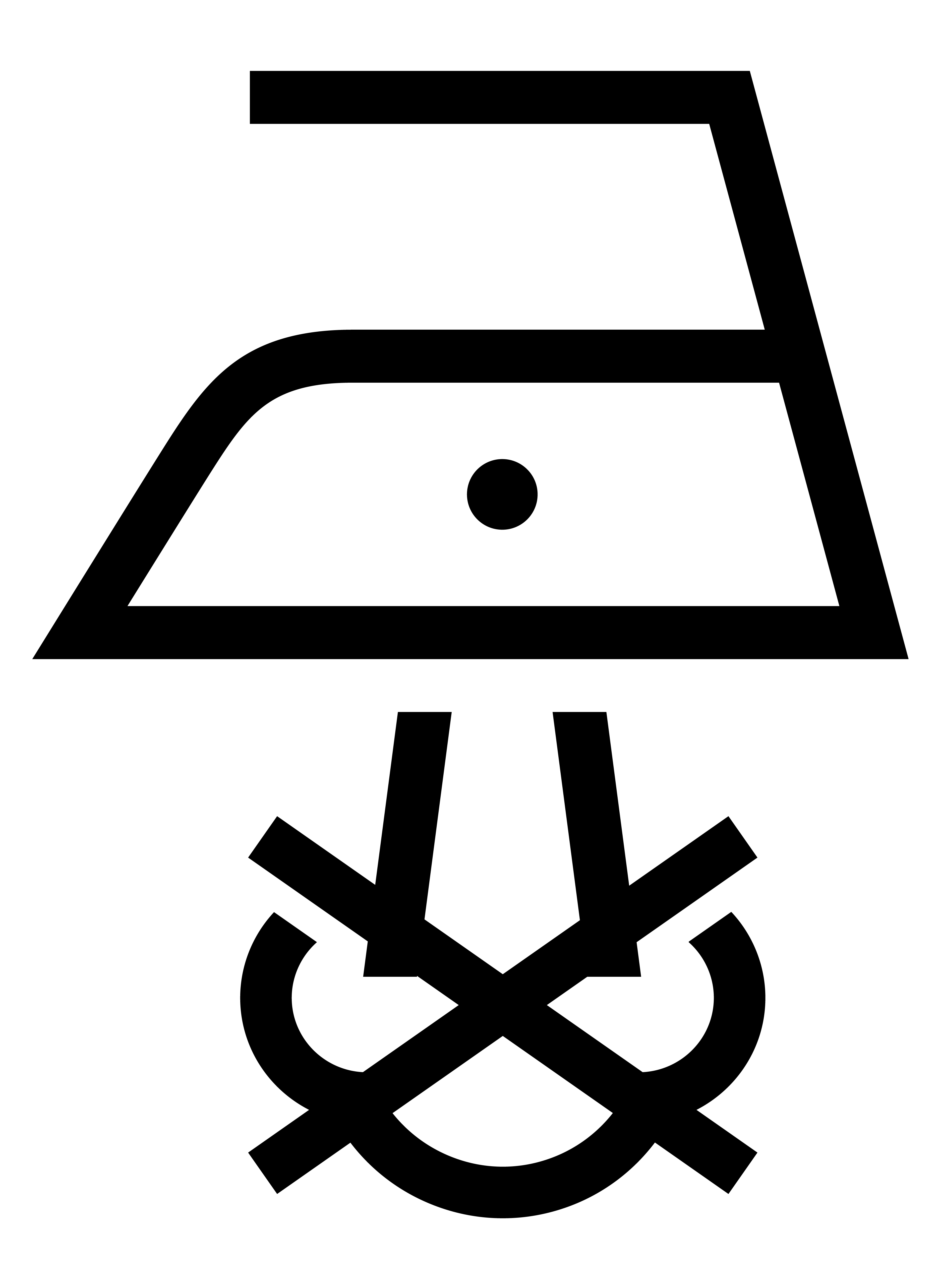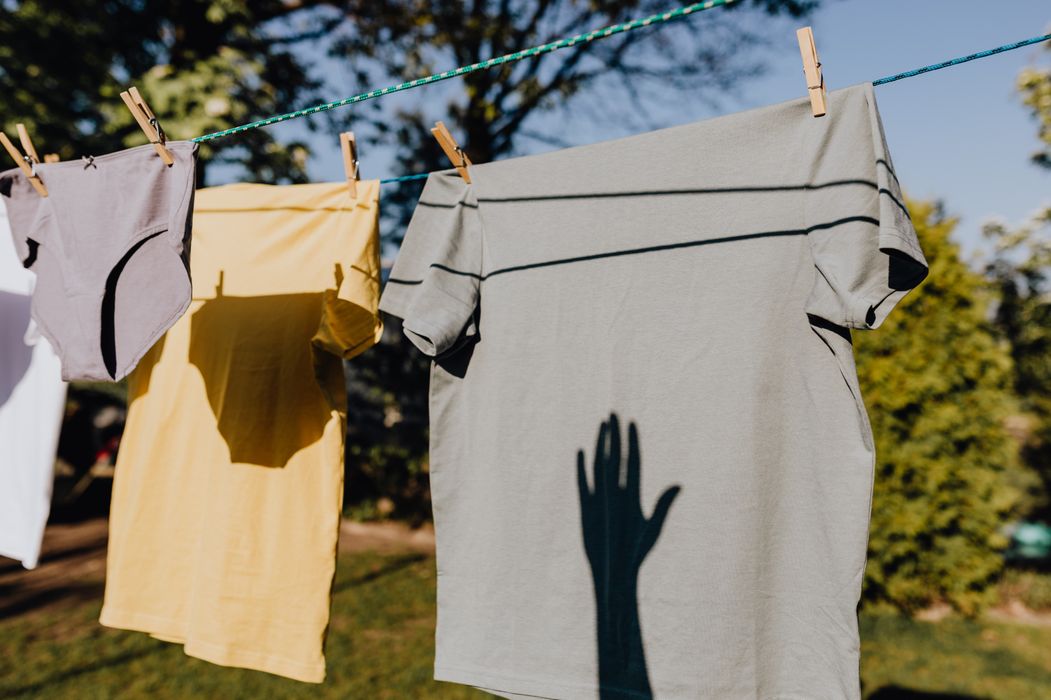Washing
95°C boiling wash
Articles e.g. in cotton or linen, white, suitable for boiling, dyed or printed. Fill the drum completely. Set an appropriate washing program (normal washing cycle). Pretreat stubborn stains.
70°C boiling wash
Articles e.g. in cotton or linen, white, suitable for boiling, dyed or printed. Fill the drum completely. Set an appropriate washing program (normal washing cycle). Pretreat stubborn stains. Energy-saving method.
60°C coloured wash
Coloured articles which must not be washed at boiling temperature e.g. made of cotton, modal, polyester and mixed fabrics.
60°C coloured wash
“Easy care” coloured wash: reduce the quantity of laundry. The drum must not be more than two-thirds full. Set the appropriate washing program (careful wash). Prewash only if the textiles are heavily soiled. Avoid spinning or do spin for short periods only to minimise the risk of creasing.
40°C coloured wash
Washing cycle e.g. for dark coloured articles made of cotton, polyester, mixed fabrics etc.
40°C mild wash
Fine laundry, e.g. in modal, viscose, synthetic fibres (polyacryl, polyester and polyamide). Reduce the quantity of laundry. Select a suitable washing program. Prewash only heavily soiled textiles. Avoid spinning or do spin for short periods only to minimise the risk of creasing.
40°C very mild wash
For articles e.g. in machine-washable wool. This washing cycle ensures a much reduced mechanical treatment. Reduce the quantity of laundry substantially. The drum should be not more than on-third full. Select an appropriate washing program.
30°C fine wash
Washing cycle, e.g. for dark coloured articles in cotton, polyester, mixed fabrics etc. Select an appropriate washing program.
30°C mild fine wash
For articles, e.g. in modal, viscose, polyacryl, polyester and polyamide. Reduce the quantity of laundry. Select an appropriate washing program. Avoid spinning or do spin for short periods only to minimise the risk of creasing.
30°C very mild fine wash
Articles made, e.g. of machine-washable wool. This washing cycle ensures a much reduced mechanical treatment. Select an appropriate washing program. Reduce the quantity of laundry substantially.
Hand wash
Hand wash at a water temperature at a maximum of 40° C,. First dissolve a fine detergent in plenty of water. Allow the textiles to float in the solution and agitate carefully. Do not rub, pull and wring out. Then rinse the textiles well, press the superfluous water out carefully and pull into shape. Treat coloured and sensitive pieces rapidly and do not leave lying in the wet state.

Handwash ambiant temperature
Hand wash at a water ambient temperature between around 20 to 30°C. First dissolve a fine detergent in plenty of water. Allow the textiles to float in the solution and agitate carefully. Do not rub, pull and wring out. Then rinse the textiles well, press the superfluous water out very carefully and pull into shape. Treat coloured and sensitive pieces rapidly and do not leave lying in the wet state.
Do not wash
Articles marked in this way must not be washed. They may be sensitive to any kind of wet treatment or be unsuitable for washing in a domestic washing machine because of their size.
Bleaching
Any bleaching agent is allowed
The empty triangle is the symbol for chlorine and oxygen bleach.
Only oxygen bleach allowed
The triangle with two oblique lines indicates that oxygen bleach (contained in universal detergents) is permitted but not chlorine bleach.
Do not bleach
The triangle with a diagonal cross (St. Andrews Cross) indicates that bleaching is not allowed. Use only bleach-free detergent.
Drying

Normal drying process
Drying in the tumbler is possible under normal load and temperature (80°) without limitations.
Mild drying processes
Caution is appropriate when tumble drying. Select mild process with reduced thermal action (temperature, duration of treatment).
Do not tumble dry
Articles unsuitable for tumble drying.
Line drying
e.g. all colourfast textiles
Drip line drying
e.g. colourfast, large textiles to dry them without wrinkles.
Flat drying
e.g. heavy, colourfast textiles
Drip flat drying
e.g. colourfast but delicate textiles
Line drying in the shade
e.g. textiles which are not colourfast (silk)
Drip line drying in the shade
e.g. delicate textiles like silk
Flat drying in the shade
e.g. woolen or delicate textiles
Drip flat drying in the shade
e.g. woolen jackets
Ironing
Hot Iron
Iron at maximum sole plate temperature of 210 °C. Corresponding to the “Cotton/linen” setting; iron whilst damp; treat and if necessary moisten; shiny or pressure-sensitive pieces should be ironed with press cloth or ironed inside out. A steam iron may be used.
Iron at moderate temperature
Iron at maximum sole plate temperature of 160 °C. Corresponding to the “wool/silk/polyester/viscose” setting: iron under a moderately moist intermediate cloth. A steam iron can be used. Avoid heavy pressure.
Iron at low temperature
Iron at maximum sole plate temperature of 120 °C. Corresponding to the “Polyacryl, polyamide (nylon), acetate” setting: if necessary, shiny or pressure-sensitive pieces should be ironed with a press cloth or inside out. Caution when using steam irons (as a rule, work without steam).

iron at a maximum sole plate temperature of 120°C without steam
Iron at maximum sole plate temperature of 120 °C without steam. Corresponding to the “Polyacryl, polyamide (nylon), acetate” setting: if necessary, shiny or pressure-sensitive pieces should be ironed with a press cloth or inside out.
Do not iron
Irreversible changes must be expected if an iron is used.
Professional cleaning
Professional dry-cleaning in: perchloroethylene, hydrocarbons (heavy benzines)
Normal cleaning process with no restrictions. Commercial stain removers on a solvent base may be used with some restrictions. A trial on a concealed part of the article is advisable beforehand.
Professional dry-cleaning in: perchloroethylene, hydrocarbons (heavy benzines)
Mild cleaning process with stringent limitation of added humidity and/or mechanical action and/or temperature. Commercial stain removers on a solvent base may be used with some restrictions. A trial on a concealed part of the article is advisable beforehand.

Professional dry-cleaning in: hydrocarbons (heavy benzines)
Normal professional dry cleaning process in hydrocarbons
Professional dry-cleaning in: hydrocarbons (heavy benzines)
Mild cleaning process with stringent limitation of added humidity and/or mechanical action and/or temperature. Commercial stain removers on a solvent base may not be used.
Do not dry-clean
No professional dry-cleaning allowed. Do not use stain removers which contain solvents.
Professional wet-cleaning
Normal wet cleaning methods with no restrictions.
Mild professional wet-cleaning
Wet cleaning technique for sensitive textiles with reduced mechanical action.
Very mild professional wet-cleaning
Wet cleaning techniques for very sensitive textiles with much reduced mechanical action.
Do not wet-clean
No professional wet-cleaning allowed.
95°C boiling wash
Articles e.g. in cotton or linen, white, suitable for boiling, dyed or printed. Fill the drum completely. Set an appropriate washing program (normal washing cycle). Pretreat stubborn stains.
70°C boiling wash
Articles e.g. in cotton or linen, white, suitable for boiling, dyed or printed. Fill the drum completely. Set an appropriate washing program (normal washing cycle). Pretreat stubborn stains. Energy-saving method.
60°C coloured wash
Coloured articles which must not be washed at boiling temperature e.g. made of cotton, modal, polyester and mixed fabrics.
60°C coloured wash
“Easy care” coloured wash: reduce the quantity of laundry. The drum must not be more than two-thirds full. Set the appropriate washing program (careful wash). Prewash only if the textiles are heavily soiled. Avoid spinning or do spin for short periods only to minimise the risk of creasing.
40°C coloured wash
Washing cycle e.g. for dark coloured articles made of cotton, polyester, mixed fabrics etc.
40°C mild wash
Fine laundry, e.g. in modal, viscose, synthetic fibres (polyacryl, polyester and polyamide). Reduce the quantity of laundry. Select a suitable washing program. Prewash only heavily soiled textiles. Avoid spinning or do spin for short periods only to minimise the risk of creasing.
40°C very mild wash
For articles e.g. in machine-washable wool. This washing cycle ensures a much reduced mechanical treatment. Reduce the quantity of laundry substantially. The drum should be not more than on-third full. Select an appropriate washing program.
30°C fine wash
Washing cycle, e.g. for dark coloured articles in cotton, polyester, mixed fabrics etc. Select an appropriate washing program.
30°C mild fine wash
For articles, e.g. in modal, viscose, polyacryl, polyester and polyamide. Reduce the quantity of laundry. Select an appropriate washing program. Avoid spinning or do spin for short periods only to minimise the risk of creasing.
30°C very mild fine wash
Articles made, e.g. of machine-washable wool. This washing cycle ensures a much reduced mechanical treatment. Select an appropriate washing program. Reduce the quantity of laundry substantially.
Hand wash
Hand wash at a water temperature at a maximum of 40° C,. First dissolve a fine detergent in plenty of water. Allow the textiles to float in the solution and agitate carefully. Do not rub, pull and wring out. Then rinse the textiles well, press the superfluous water out carefully and pull into shape. Treat coloured and sensitive pieces rapidly and do not leave lying in the wet state.

Handwash ambiant temperature
Hand wash at a water ambient temperature between around 20 to 30°C. First dissolve a fine detergent in plenty of water. Allow the textiles to float in the solution and agitate carefully. Do not rub, pull and wring out. Then rinse the textiles well, press the superfluous water out very carefully and pull into shape. Treat coloured and sensitive pieces rapidly and do not leave lying in the wet state.
Do not wash
Articles marked in this way must not be washed. They may be sensitive to any kind of wet treatment or be unsuitable for washing in a domestic washing machine because of their size.
Any bleaching agent is allowed
The empty triangle is the symbol for chlorine and oxygen bleach.
Only oxygen bleach allowed
The triangle with two oblique lines indicates that oxygen bleach (contained in universal detergents) is permitted but not chlorine bleach.
Do not bleach
The triangle with a diagonal cross (St. Andrews Cross) indicates that bleaching is not allowed. Use only bleach-free detergent.

Normal drying process
Drying in the tumbler is possible under normal load and temperature (80°) without limitations.
Mild drying processes
Caution is appropriate when tumble drying. Select mild process with reduced thermal action (temperature, duration of treatment).
Do not tumble dry
Articles unsuitable for tumble drying.
Line drying
e.g. all colourfast textiles
Drip line drying
e.g. colourfast, large textiles to dry them without wrinkles.
Flat drying
e.g. heavy, colourfast textiles
Drip flat drying
e.g. colourfast but delicate textiles
Line drying in the shade
e.g. textiles which are not colourfast (silk)
Drip line drying in the shade
e.g. delicate textiles like silk
Flat drying in the shade
e.g. woolen or delicate textiles
Drip flat drying in the shade
e.g. woolen jackets
Hot Iron
Iron at maximum sole plate temperature of 210 °C. Corresponding to the “Cotton/linen” setting; iron whilst damp; treat and if necessary moisten; shiny or pressure-sensitive pieces should be ironed with press cloth or ironed inside out. A steam iron may be used.
Iron at moderate temperature
Iron at maximum sole plate temperature of 160 °C. Corresponding to the “wool/silk/polyester/viscose” setting: iron under a moderately moist intermediate cloth. A steam iron can be used. Avoid heavy pressure.
Iron at low temperature
Iron at maximum sole plate temperature of 120 °C. Corresponding to the “Polyacryl, polyamide (nylon), acetate” setting: if necessary, shiny or pressure-sensitive pieces should be ironed with a press cloth or inside out. Caution when using steam irons (as a rule, work without steam).

iron at a maximum sole plate temperature of 120°C without steam
Iron at maximum sole plate temperature of 120 °C without steam. Corresponding to the “Polyacryl, polyamide (nylon), acetate” setting: if necessary, shiny or pressure-sensitive pieces should be ironed with a press cloth or inside out.
Do not iron
Irreversible changes must be expected if an iron is used.
Professional dry-cleaning in: perchloroethylene, hydrocarbons (heavy benzines)
Normal cleaning process with no restrictions. Commercial stain removers on a solvent base may be used with some restrictions. A trial on a concealed part of the article is advisable beforehand.
Professional dry-cleaning in: perchloroethylene, hydrocarbons (heavy benzines)
Mild cleaning process with stringent limitation of added humidity and/or mechanical action and/or temperature. Commercial stain removers on a solvent base may be used with some restrictions. A trial on a concealed part of the article is advisable beforehand.

Professional dry-cleaning in: hydrocarbons (heavy benzines)
Normal professional dry cleaning process in hydrocarbons
Professional dry-cleaning in: hydrocarbons (heavy benzines)
Mild cleaning process with stringent limitation of added humidity and/or mechanical action and/or temperature. Commercial stain removers on a solvent base may not be used.
Do not dry-clean
No professional dry-cleaning allowed. Do not use stain removers which contain solvents.
Professional wet-cleaning
Normal wet cleaning methods with no restrictions.
Mild professional wet-cleaning
Wet cleaning technique for sensitive textiles with reduced mechanical action.
Very mild professional wet-cleaning
Wet cleaning techniques for very sensitive textiles with much reduced mechanical action.
Do not wet-clean
No professional wet-cleaning allowed.



